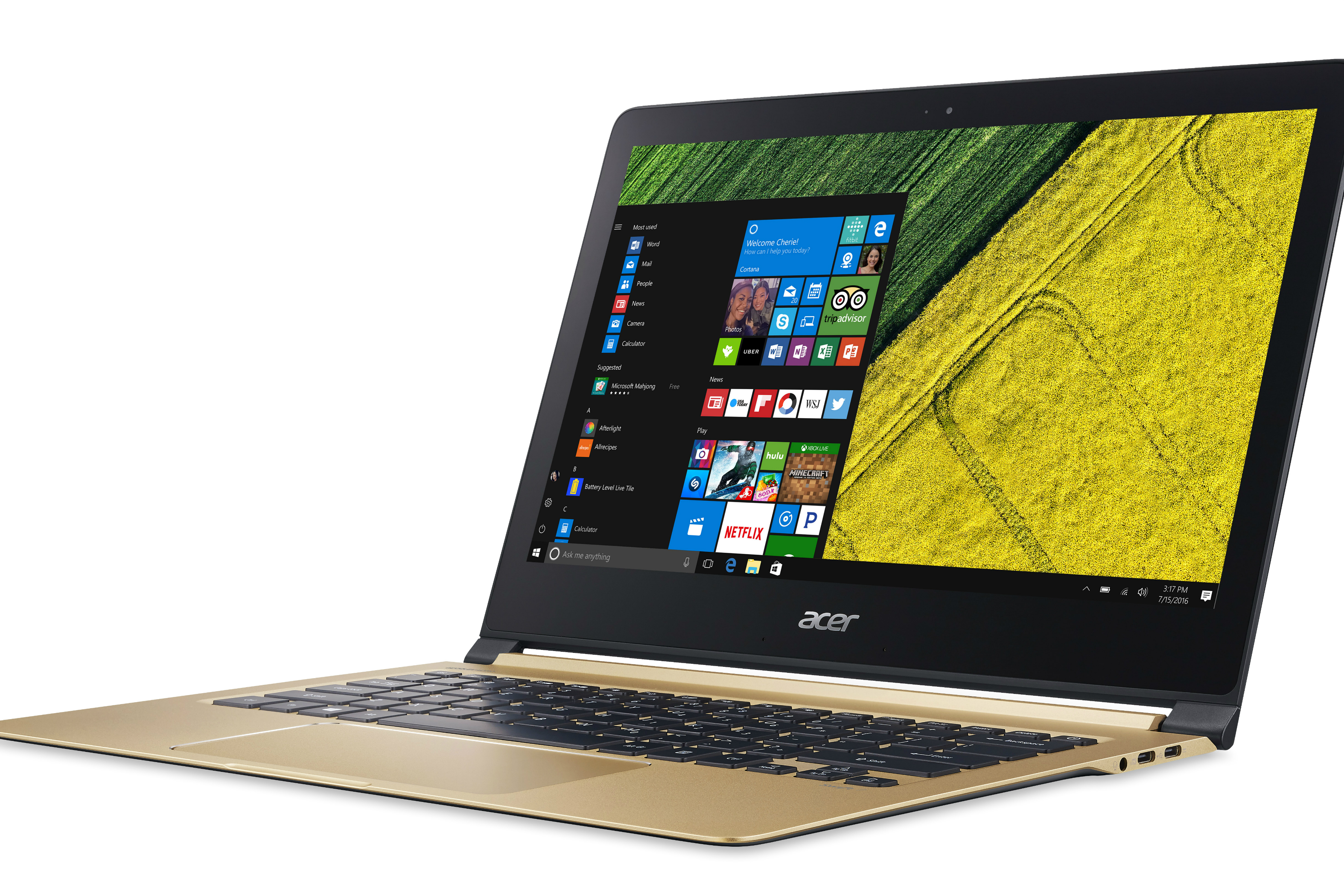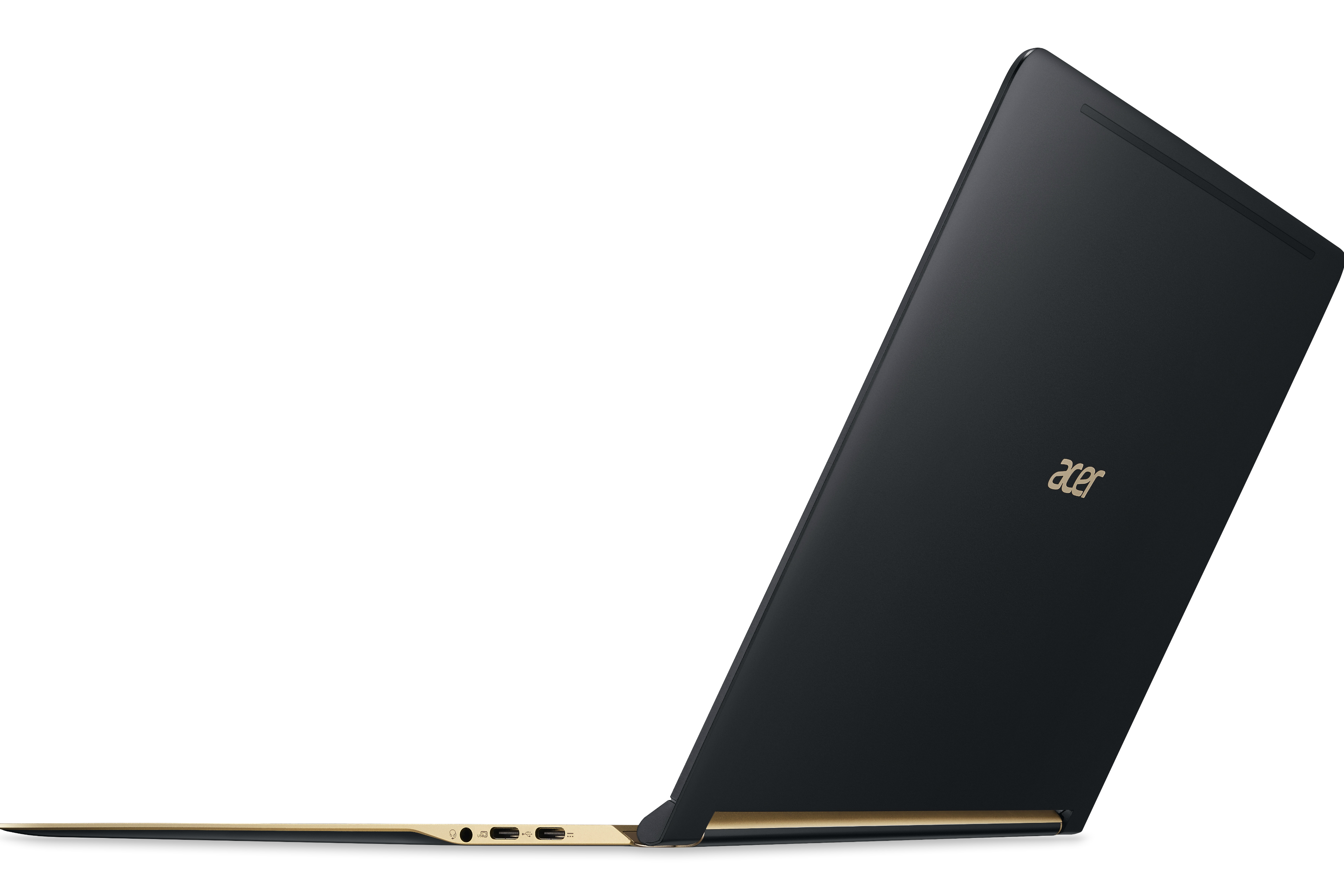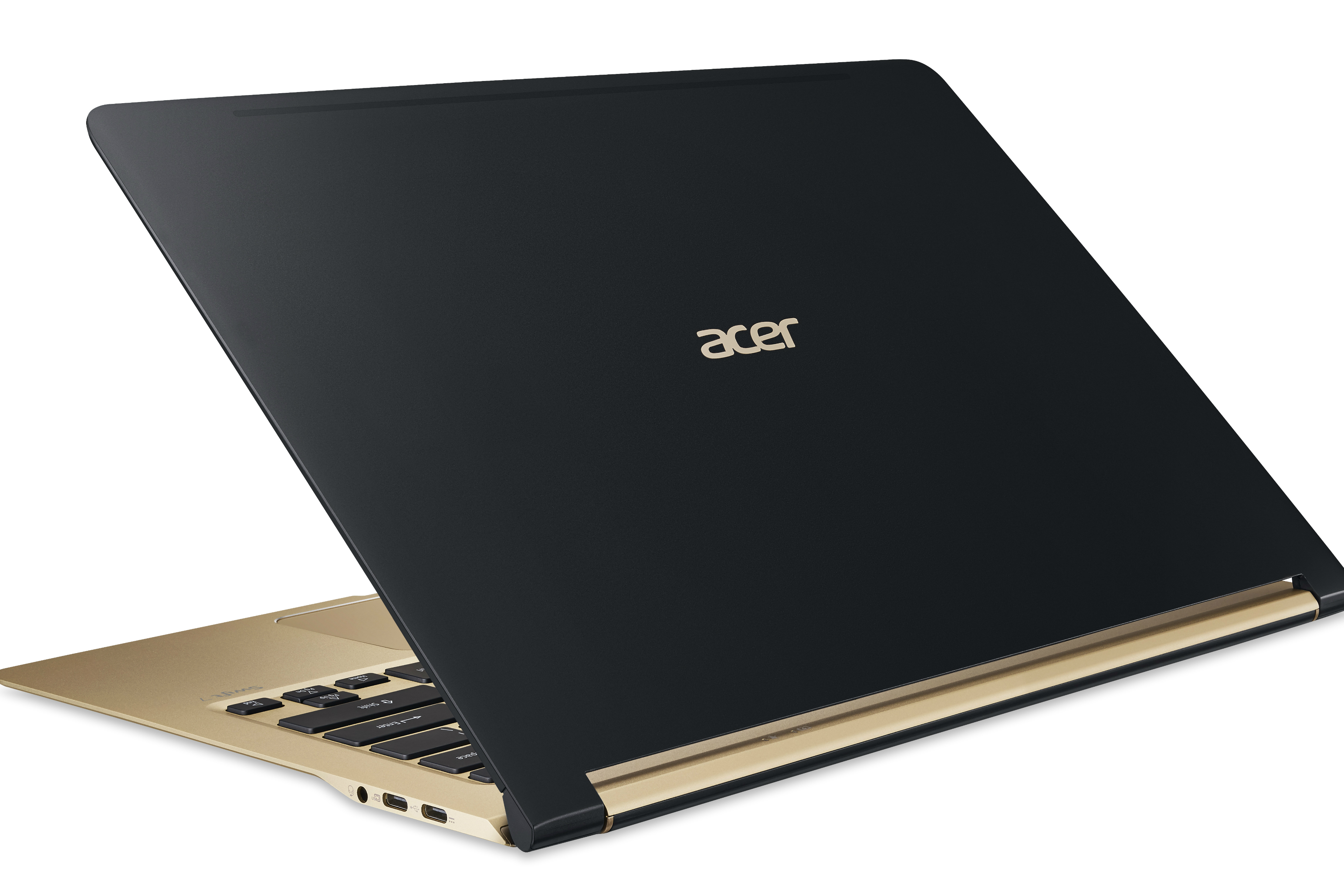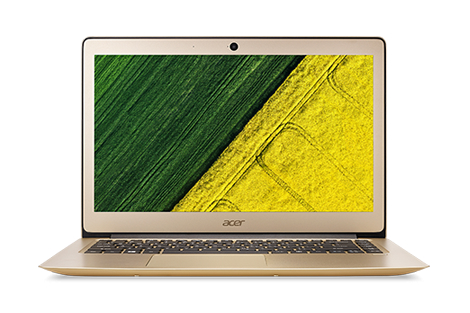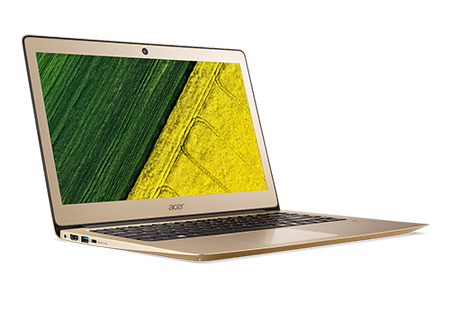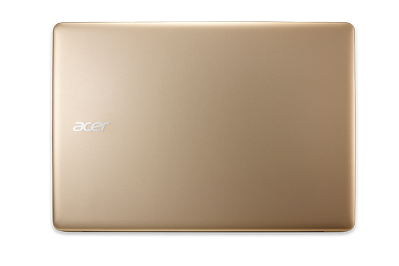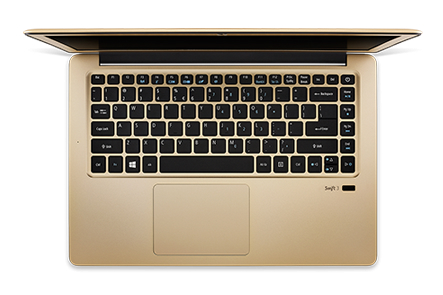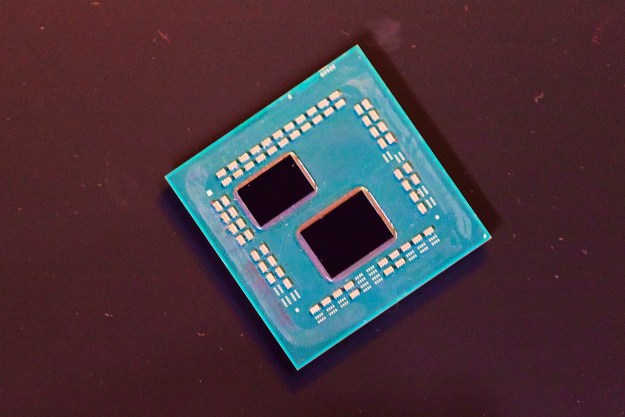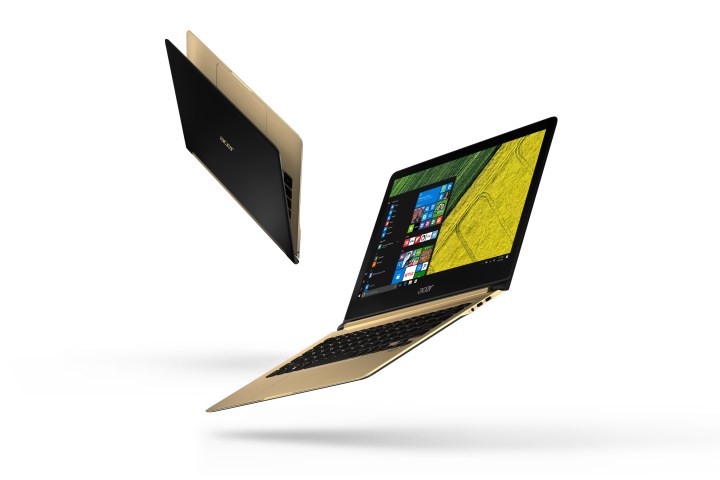
Today, Acer is joining the club by officially releasing two of the notebooks that it announced at IFA 2016: the Swift 7 and Swift 3. The Swift line will eventually also include the smaller and more entry-level Swift 1 with a 12-inch display, and the more mainstream 13.3-inch Swift 5. While the Swift 7 and Swift 3 can be purchased starting today at the Acer Store and will be available soon at Amazon and other retailers, the Swift 1 and Swift 5 are expected to release next month.
The Swift 7 is initially shipping in a single model, with a Core i5-7Y54 processor, 8GB RAM, and a 256GB SSD. Pricing for this model is $1,100, and so far Acer hasn’t released information on future configurations. The Swift 7 is most notable for its “world’s thinnest” 0.39-inch-thick and ultralight 2.48 pound aluminum unibody chassis. Aesthetics should be pleasing but not overwrought, with a matte black exterior mated with a gold inner surface.
Acer opted to stick with a Full HD (1,920 by 1,080) resolution for the 13.3-inch IPS display. Note that the display does not support touch, likely to help shave off a few millimeters of thickness. Acer’s Color Intelligence technology aims to dynamically adjust gamma and saturation in real time to optimize brightness and color while reducing the load on the CPU. The display uses Corning Gorilla Glass for durability, and offers Acer’s BluelightShield technology to help alleviate eye strain.
The Swift 7 is loaded up with the latest components, including 2X2 802.11ac Wi-Fi with Mu-MIMO to maximize performance with the latest wireless standards. Dual USB 3.1 Type-C ports offer compatibility with the newest connectivity specification, and both can be used for charging mobile devices. The battery should be able to offer around nine hours of battery life.
The other model in the Swift lineup that’s available for purchase today is the Swift 3, a more moderately priced notebook that fits into a tighter budget. The Swift 3 is also shipping in a single configuration, running $650 for a last-generation Skylake CPU, the Core i5-6200U, and stocked with 8GB RAM and a 256GB SSD.
The Swift 3 uses a 14-inch IPS display at Full HD (1,920 by 1,080) resolution, and supports touch. The notebooks utilizes an aluminum chassis that a bit fatter than its Swift 7 sibling, coming in at a relatively chunky 0.7-inch thick and weighing in at 3.31 pounds. A full complement of ports are on hand, including one USB 3.1 Type-C port. The Swift 3 should be able to work up to 12 hours on a single charge.
Sometime in the near future, you’ll have a few more options to consider from Acer’s recently revamped notebook lineup. For now, you can choose between the world’s thinnest notebook if you’re looking to minimize your travel weight, or a decidedly budget model that should nevertheless meet mainstream computing needs.
Editors' Recommendations
- 4 CPUs you should buy instead of the Ryzen 7 7800X3D
- Between AMD’s Ryzen 7 7800X3D and Ryzen 9 7950X3D, there’s no contest
- AMD, please don’t make the same mistake with the Ryzen 7 7700X3D
- The new Acer Swift 3 is an OLED laptop for just $900
- Acer launches eye-popping displays with built-in 3D tech

